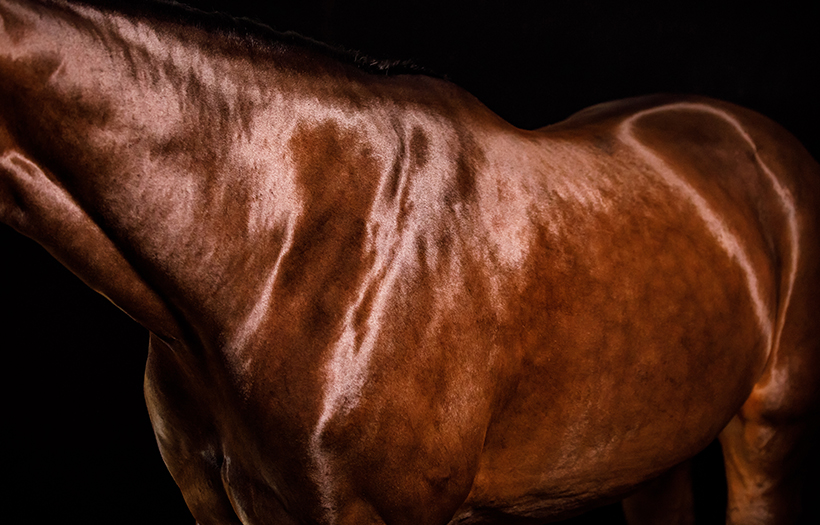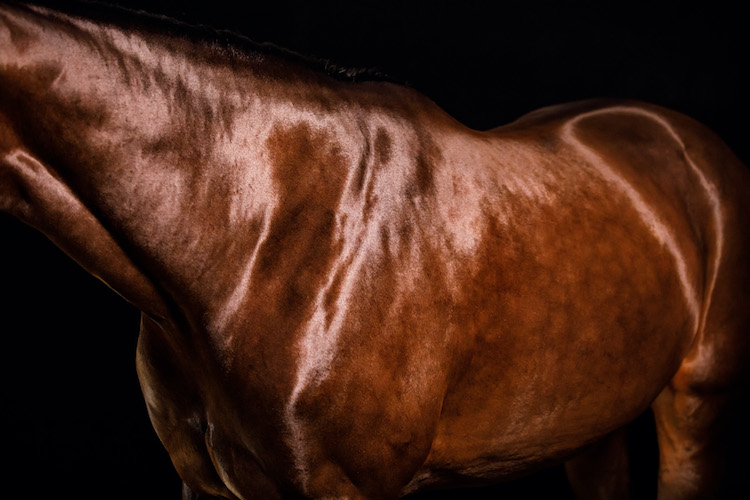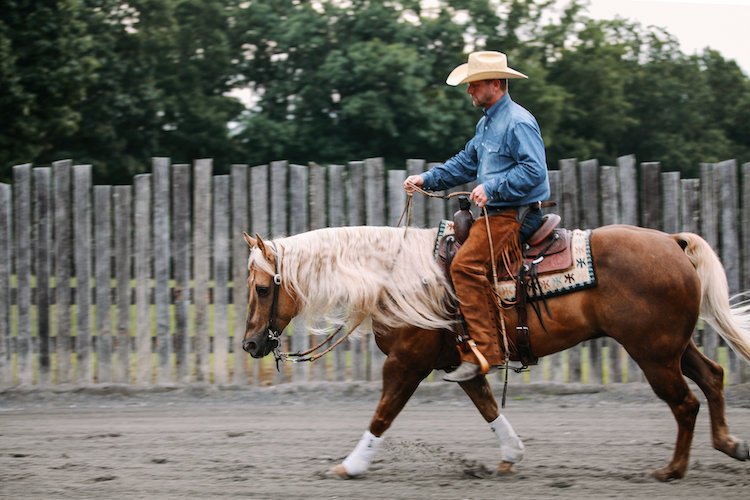FEEDING TO IMPROVE YOUR HORSE’S TOPLINE

What is topline and what contributes to it?
The topline of the horse refers to the muscle cover over the top of the horse’s neck, back and rump, specifically the withers, back, loin and croup.
Show and performance horses require strong toplines to provide balance and strength for racing, jumping and dressage.
Many factors contribute to the horse’s topline or lack of it.
The list includes:
- Genetic conformation
- Age
- Exercise
- Diseases like gastric ulcers and Cushing’s Disease
- Chronic back pain like kissing spine, poor saddle fit, vertebral sublaxation, arthritis, etc

How do nutritional factors play into this?
Nutritional factors include body condition, because as the amount of fat tissue increases it will add depth to the horse’s topline as well.
However, if we provide enough calories to maintain a body condition of 5.0 or more in a horse that is in regular work, and don’t supply enough quality protein, the topline can be inadequate to provide optimal muscular performance.
Protein quality is dependent upon the amount of essential amino acids it contains. The three most important or limiting amino acids for the horse are lysine, threonine and methionine.
Growing horses and horses in work need more of these amino acids for muscle growth and repair.
They are called limiting amino acids because if they are not provided in the diet, they can’t be synthesized at an adequate amount in the body and protein or muscle growth is limited.

How does this affect different breeds or types of horses?
Many mature horses in work are provided large amounts of hay and pasture, and many of these breeds or types, especially sport horses, are easy keepers.
Adequate body condition can be maintained with these horses, but in many cases, topline can be improved with a simple feeding change.
The problem is that conventional horse feeds or concentrates are designed to meet nutrient requirements when fed at a minimal amount of 0.5% of body weight daily.
Many sport horses, and other easy keeper breeds, are fed less than this amount because of their more efficient metabolism and large amounts of forage fed.
This results in less than required amounts of amino acids, minerals, and vitamins in the horse’s diet.
This situation is more problematic for providing essential amino acids for the horse.
Because the digestion of protein or absorption of essential amino acids from forages is less than half as that for concentrates, resulting in inadequate essential amino acid intake.
How can we ensure they’re getting the amino acids they need for healthy topline?
Feeding a few pounds per day of a regular horse feed won’t provide adequate essential amino acids for many active horses, and a good topline will not be achieved.
The way to ensure an adequate supply of essential amino acids is to include a diet balancer in your horse’s diet.
Diet Balancers are designed to meet the protein, mineral and vitamin requirements when fed at small amounts along with only forage (hay and pasture).
They are recommended for easy keepers and horses requiring a feeding program for weight reduction.
They also provide a way to fortify the diet if a concentrate is fed at less than the recommended amount.
The minimum feeding rate is 1 pound per 1,000-lbs body weight per day.
Replacing one pound daily of your regular horse feed with one pound of a diet balancer will help to provide the required amount of essential amino acids to your horse’s diet.
And you should see an improvement in topline in a few months.

Where can you find a great diet balancer?
ProElite® Horse Feeds include Grass Advantage and Alfalfa Advantage Diet Balancers.
These two products are designed to meet all nutrient requirements of your horse with a low minimum feeding rate of 1 pound per 1,000 pounds of body weight.
For active horses increase to 1.5 to 2,5 pounds per day depending on activity level and desired topline.
ProElite Topline Advantage is a supplement that can be fed in addition to a regular concentrate and has an even greater protein and amino acid content.
It has a feeding rate to 8 to 16 ounces per day, according to activity level.
These products contain high levels of guaranteed amino acids and will provide a significant improvement in your horse’s topline in a few months.
By Marty Adams, PhD, PAS – Cargill Technical Services Equine Nutritionist
